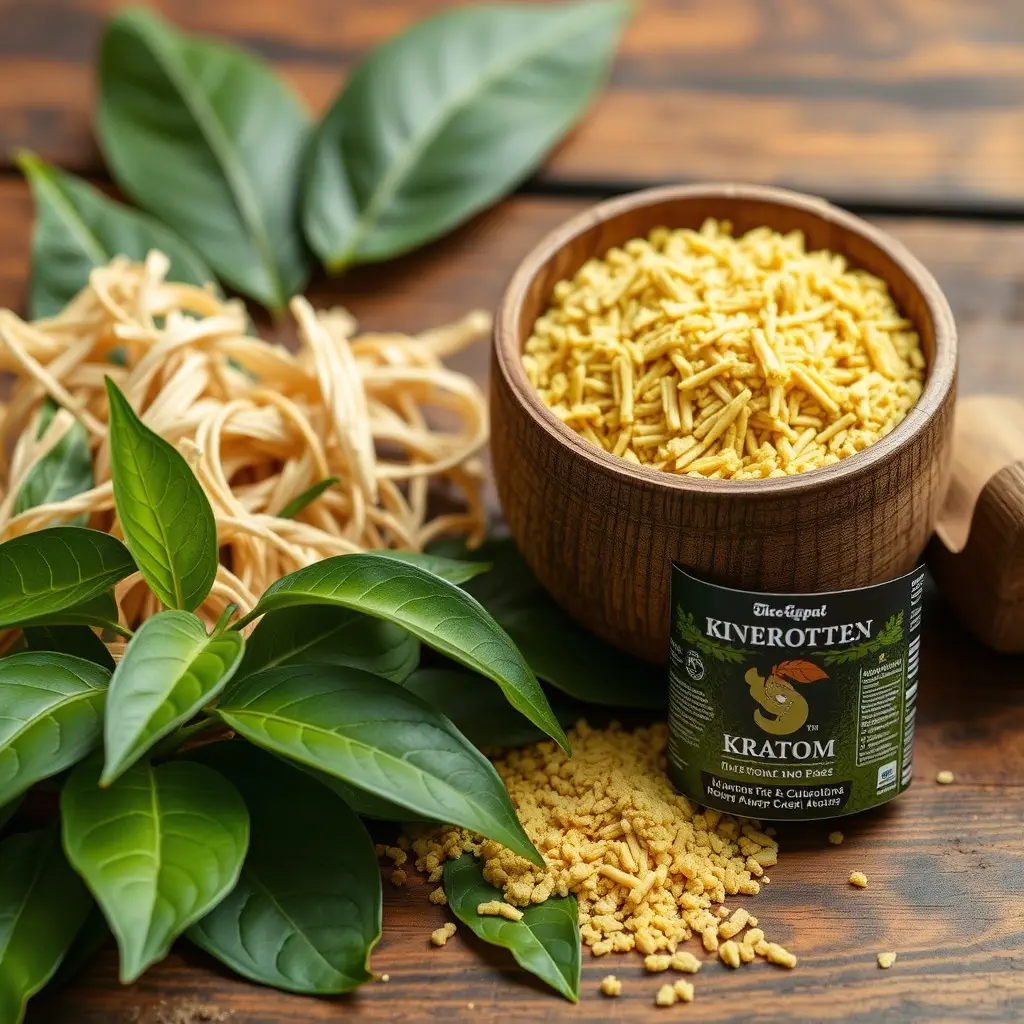The U.S. Army monitors the use of kratom, a plant from Southeast Asia with pain-relieving properties that has been increasingly utilized as an alternative treatment, within its ranks due to its opioid-like effects. The military's drug testing policies are extensive and currently include kratom in their screening procedures. Service members need to be aware of the evolving legal status of kratom and its potential impact on their careers, as the Army continues to assess new research on the subject. Soldiers considering kratom use should consult with medical professionals and adhere to the latest directives from the Department of Defense to remain compliant with the Army's substance usage policies. It is crucial for service members to stay informed about the Army's stance on kratom to maintain their health and operational readiness, as does the Army test for kratom as part of its drug testing protocols.
Exploring the potential of natural remedies for pain management, this article sheds light on kratom supplements as a viable alternative. Known for its complex alkaloid profile, kratom has garnered attention for its analgesic effects. We delve into the scientific basis for these properties and assess how they can be harnessed to alleviate discomfort. Furthermore, we examine the army’s interest in kratom, addressing whether it features in their testing and usage protocols, providing a comprehensive overview of this intriguing plant’s role in pain management.
- Understanding Kratom's Role in Natural Pain Management
- The Science Behind Kratom's Analgesic Properties
- Exploring the Army's Stance on Kratom Testing and Use
Understanding Kratom's Role in Natural Pain Management

Kratom, a tropical evergreen tree native to Southeast Asia, has garnered attention in natural pain management circles due to its alkaloid profile. Mitragynine and 7-hydroxymitragynine are two such alkaloids found within kratom leaves that have been observed to interact with the body’s opioid receptors, providing both pain-relieving and mood-enhancing effects. The unique properties of these compounds make kratom a potential alternative for individuals seeking natural relief from chronic or acute pain without the dependency risks associated with prescription opioids.
The use of kratom as a natural analgesic has been documented in traditional medicine practices within its regions of origin, where it has been utilized to manage pain and improve energy levels. Modern research supports these traditional uses, suggesting that kratom can be an effective adjunct or replacement for over-the-counter (OTC) or prescription pain medications. However, it’s important to approach the use of kratom with caution, as the plant’s efficacy and safety profile can vary based on dosage, individual physiology, and specific pain conditions. While some users report significant benefits, others may experience adverse effects or develop a dependence, underscoring the need for further research to understand its role in natural pain management fully. Additionally, the legal status of kratom varies by jurisdiction, with some regions imposing restrictions similar to controlled substances; this includes potential testing for kratom presence in the military, as evidenced by the question “Does the Army test for kratom?” being a relevant query among service members who may be interested in natural pain management options. Understanding both the potential benefits and limitations of kratom is crucial for anyone considering its use as part of their health regimen.
The Science Behind Kratom's Analgesic Properties

mitric properties of kratom, a tropical evergreen tree native to Southeast Asia, have been the subject of scientific inquiry due to its traditional use for pain relief. Kratom leaves contain alkaloids such as mitragynine and 7-hydroxymitragynine, which are thought to interact with opioid receptors in the brain, producing analgesic effects. The mechanism by which kratom exerts its pain-relieving action is complex and multifaceted. It involves mu, delta, and kappa opioid receptors, as well as other neurotransmitter systems like noradrenaline, dopamine, and serotonin. These interactions can lead to both pain reduction and mood enhancement.
Research has indicated that the analgesic effects of kratom are related to its alkaloids’ ability to modulate the brain’s perception of pain signals. While the science is still evolving, with ongoing studies aimed at understanding the full scope of kratom’s interactions with the body, preclinical data suggests that kratom may offer a natural alternative for pain management. However, it’s important to approach such supplements with caution and to be aware that their use is subject to regulatory scrutiny, as evidenced by instances where their detection has led to questions within institutions like the military, as in the case of does the army test for kratom. Prospective users should consider consulting healthcare professionals before integrating kratom into their pain management regimen, especially given its potential for abuse and dependency, as well as the possibility of adverse effects when combined with other substances.
Exploring the Army's Stance on Kratom Testing and Use

mitigating pain effectively, individuals have turned to alternative treatments such as kratom supplements. Kratom, a plant native to Southeast Asia, has gained attention for its potential pain-relieving properties. Within the United States military, specifically in the Army, there is a stringent policy on substance use due to the critical nature of maintaining operational readiness and the importance of soldier health. The Army’s stance on kratom testing and use reflects this commitment to the well-being of service members while ensuring compliance with regulations that prohibit non-sanctioned substances. While the Army does conduct comprehensive drug tests that include a wide range of substances, the specific inclusion of kratom in these tests has been a topic of interest among troops. Reports and directives have varied over time as the military evaluates the emerging research on kratom’s effects and its classification under existing drug policies. Service members are advised to be aware of the evolving regulations and the potential for unintended violations, given the complexity of kratom’s legal status and its alkaloids that mimic opioid effects. It is crucial for those in the military considering using kratom to understand the Army’s stance, as it can impact their career and health. Prospective users should consult with medical professionals and refer to the latest guidance from the Department of Defense to ensure they remain within policy boundaries.






